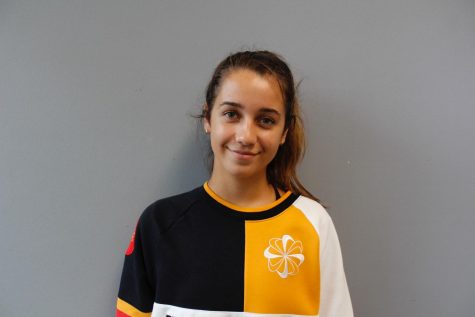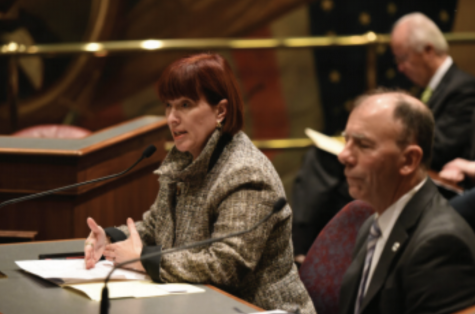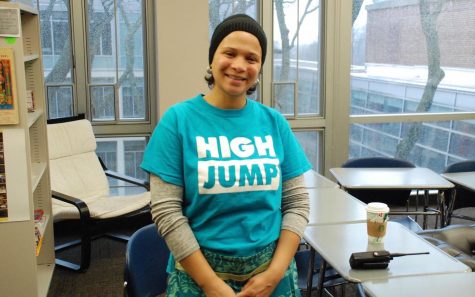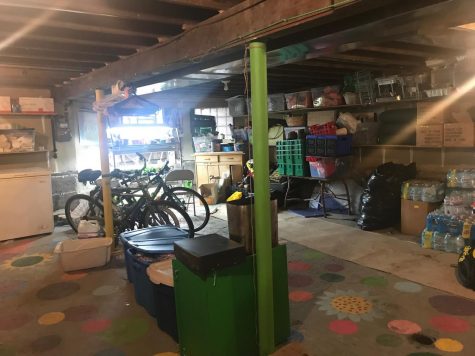The Montessori Method
It’s Hard to Explain
Walking into an old building with the word “Montessoaring” slapped across aging stone in large red and white font, I feel a sense of nostalgia. Taking the stairs two by two, I open the glass door standing between the rest of the world and a tiny haven called Near North Montessori (NNMS), on the corner of Division and Clever, neatly tucked into Wicker Park.
I walk down a short hallway of metal lockers—each one adorned with locker tags decorated with the name of a child written in cursive, and an image representative of Amendments in the constitution. Once I see Amendment XXVII, I realize I’ve reached my final destination: April’s 3-6 class.
As a part of their philosophy, Montessori classrooms do not separate classes based on age. In fact, each classroom is comprised of an equal number of students from three different ages. Words that would typically describe your grade level, “kindergarten” and “fourth grade,” are not a part of the vocabulary at NNMS. “Pre-K” and “kindergarten” are combined by age more loosely into “3-6” classes. First graders through Third graders are considered “6-9ers.” Fourth through sixth grade is “9-12,” and junior high is referred to as “12-14.”
“Thinking back on it now, it was such a different experience,” junior and former NNMS student Chad White said. “I loved how all the grades were mixed together, which set this foundation of community and collaboration.”
Arranging classrooms in this way allows for older students to guide and mentor younger students. The founder of the Montessori philosophy, Maria Montessori, said, “The greatest sign of success for a teacher is to be able to say, ‘The children are now working as if I do not exist.’”
A small sign on the wall next to the entrance reads, “Help me do it myself,” which is telling in the environment I find myself submerged in. The floor is occupied almost entirely by red and blue rugs, each smaller than the size of a beach towel. Contrary to Parker’s kindergarten classrooms, the largest table seats only two children. At the age of three years old, when most schools are teaching fingerpainting, Montessori students are expected to manage themselves autonomously. “At Near North, I really enjoyed the independence I had,” White said. “Early on within the classrooms we chose exactly what we wanted to do. Until seventh grade, the vast majority of our time was unconstructed, and it was up to us to be productive. During 3-6, we would do what we wanted. School was fun, for real. It was a place I wanted to be.”
April Jean Baptiste, a teacher, greets me with a smile. She wears a long-sleeved pink shirt and army pants, with her hair smoothed into a ponytail. Instantly, I am intoxicated by the scent of bananas. I make my way further into the classroom to see, just as I had expected, two girls in red-striped aprons baking banana bread. They acknowledge my presence with a slight wave, but they remain focused on the task at hand.
The children are used to observers. Parents, teachers, and strangers spend frequent mornings examining classrooms, engrossed and fascinated with each peculiar tradition and “abnormality” in the curriculum.
I make my way over to the designated visitor’s chair. A four-year-old boy, sitting at a table adjacent to my chair, looks at me. It occurs to me that I am foreign to him, but nonetheless, he reaches his hand out to greet me.
“My name is Ronin,” he says.
“Hi, I’m Ava,” I respond.
“It is very nice to meet you, Ava.”
I’m taken aback. I have never conversed with a four-year-old in such a way. “Would you like to observe my work?” I nod.
As I look around the room, I see children wandering, but never aimlessly. They move about the room in efforts to find work that will interest them. “Montessori really teaches you how to manage your time and gives you a lot of freedom to be creative and use your imagination,” freshman and former student at NNMS Olivia Hanley said. “I think in a lot of ways, Parker is very similar to Montessori. I loved the freedom they gave to us. All of the teachers trusted me and gave me opportunities to do things on my own.”
April assists a three-year-old girl with a purple skirt and matching bow distinguish bodies of water as her work of choice.
“Ar-chi-pel-a-go,” she sounds out, while filling a clay model with water. A boy working to reconstruct the world map using continent-shaped puzzle pieces seems perplexed. He walks up to April, taps her on the shoulder, and waits patiently until she is available.
At NNMS, you’ll never hear the words “Ms.,” “Mrs.,” or “Mr.” uttered from a student younger than 12 years old. In junior high, you begin to refer to your teachers in a formal matter, but from ages 3-12, teachers are only called by their first names. This simple act, although unusual, is done to promote mutual respect between teacher and student. According to Maria Montessori, there is as a result of this practice an understanding between both individuals that their contributions are equally valued, and that neither person is more important than the other.
“I think Parker is really similar to Near North in that they both try to stay away from ‘traditional’ education,” White said. “I think they both talk about how important community is within the school.”
Forget finger painting or childish animal noises. Montessori activities train fine motor skills with real-life work. Students can be found polishing metal, scrubbing windows, and dusting shelves. The classroom mimics a city that is constantly in motion.
“I loved the fact that we didn’t do a lot of pure academic things in 3-6,” White said. “It created an environment where I wanted to learn. I was curious and excited throughout the day.”
Next I approach a boy in a yellow smock polishing a silver metal frog. I ask him, “What are you doing?”
“I’m doing my work,” he responds as if it were obvious. “This is what we do to keep our things how they are supposed to be.”
Next to the boy is a girl with pigtails and a blue dress spelling out words in cursive. It is then that it occurs to me. As I look around, almost every sign and label is written in cursive.
Cursive handwriting, and handwriting in general, is no longer a teaching priority in many public schools across the United States. For example, Chicago Public Schools do not require cursive instruction. Traditionally the subject was taught in third grade, but Montessori children continue this practice at much younger ages. Children learn to write in cursive starting at three years old by dipping their fingers in water before tracing sandpaper letters as their introduction to the cursive alphabet. This method prepares the hand to write before you even allow the child to use a pencil.
As the morning draws to an end, and I bid my farewells to April and the 3-6ers, I make my way back to 330 W. Webster. When my peers ask me where I’ve been, I describe the atypical experience at NNMS. They don’t understand.











